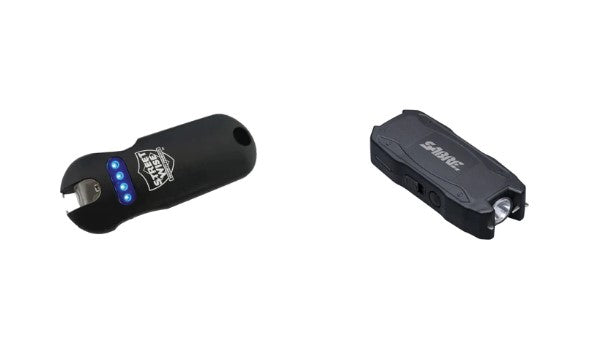Stun guns, often hailed as non-lethal self-defense tools, have gained popularity as a means of personal protection. These devices are designed to deliver a jolt of electric shock to incapacitate an assailant temporarily. While stun guns are widely marketed as effective and safe, it's important to understand their mechanisms, limitations, and real-world effectiveness. In this article, we delve into the science behind stun guns and explore their efficacy as self-defense tools.
Understanding Stun Gun Mechanics
Stun guns are handheld devices that generate a high-voltage, low-amperage electrical discharge. The electrical shock disrupts the body's normal neuromuscular functions, leading to temporary incapacitation. Stun guns typically consist of two main components: the prongs or electrodes and the power source. When the prongs make contact with an assailant's body, they create a circuit through which the electric shock is delivered.
How Stun Guns Work
Upon activation, a stun gun releases a series of electrical pulses that interfere with the body's communication between nerves and muscles. This disruption causes the muscles to contract rapidly, leading to disorientation and loss of control over bodily movements. The pain and muscle spasms induced by the shock can render an attacker immobile for a short period.
Factors Affecting Stun Gun Effectiveness
Several factors influence the effectiveness of a stun gun:
- Placement and Duration of Contact: Stun guns must make direct contact with an assailant's body to be effective. The longer the contact, the more incapacitating the shock can be.
- Clothing and Barrier Thickness: Thick clothing or barriers can reduce the efficiency of a stun gun by limiting the direct contact between the prongs and the skin.
- Size and Voltage of the Stun Gun: Higher voltage stun guns tend to be more effective, but size and design also play a role in determining the impact of the shock.

Real-World Effectiveness
While stun guns can be effective under the right circumstances, their real-world effectiveness varies. Some attackers may be more resistant to the shock due to factors such as adrenaline or intoxication. Additionally, stun guns may not work as well against individuals with a higher pain tolerance. Therefore, it's important to recognize that stun guns are not guaranteed to incapacitate an assailant in all situations.
Considerations for Using Stun Guns
When considering the use of a stun gun for self-defense, keep the following in mind:
- Training: Proper training on how to use a stun gun effectively and safely is crucial. Without training, you may not use the device correctly, reducing its effectiveness.
- Legal Regulations: Research and understand the legal regulations surrounding stun gun use in your area. Some regions have restrictions on their use, and using a stun gun improperly could result in legal consequences.
Conclusion
Stun guns can be effective tools for self-defense when used properly and in the right circumstances. However, their effectiveness is not guaranteed, and they have limitations. It's essential to be aware of their mechanics, potential drawbacks, and legal considerations before deciding to rely solely on a stun gun for personal protection. Exploring a range of self-defense options at Lock & Load Boutique and acquiring proper training can empower you to make informed decisions about your safety.




